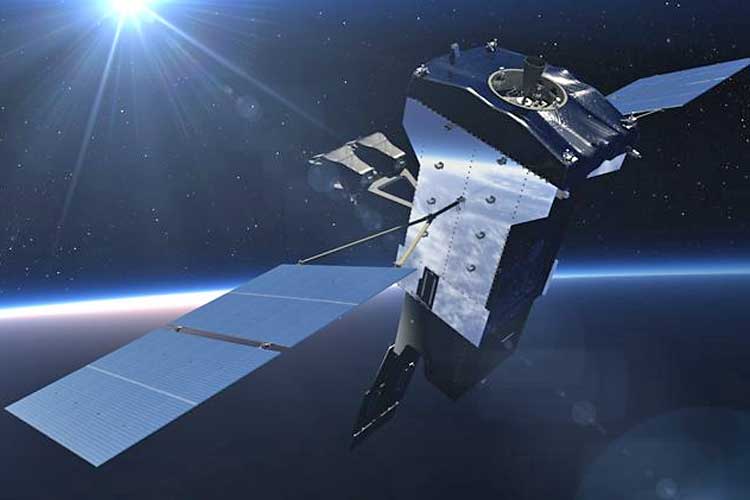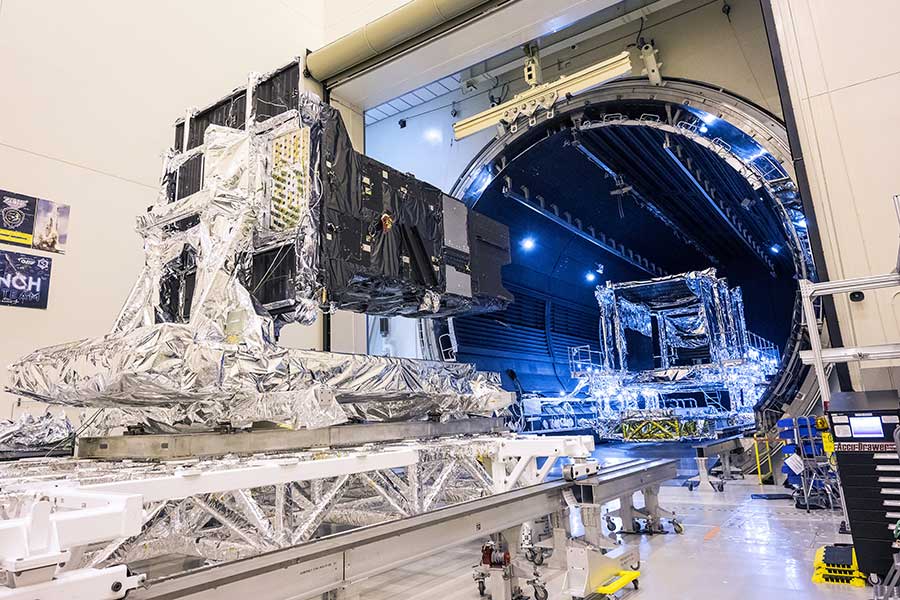Lockheed Martin’s sixth and final SBIRS Missile Warning Satellite has been successfully launched and is now under US Space Force control.
~
LM Press Release, Buckley Space Force Base, 04 August 2022: Following a successful launch from Cape Canaveral Space Force Station in Florida today, the US Space Force is now communicating with the sixth Space Based Infrared System Geosynchronous Earth Orbit (SBIRS GEO) -6 satellite, built by Lockheed Martin.
The final satellite in the SBIRS programme series, GEO-6 joins the US Space Force’s constellation of missile warning satellites equipped with powerful scanning and staring infrared surveillance sensors.
“The need for Overhead Persistent Infrared systems has never been more critical,” said Michael Corriea, vice president of Lockheed Martin Space’s Overhead Persistent Infrared (OPIR) Mission Area. “At Lockheed Martin, we are making advancements to keep pace with evolving needs based on emerging threats in our military customers’ environment, helping pave the way for the future.”
The GEO-6 satellite is a stepping stone toward the resilient missile warning to be provided by SBIRS’ successor, the Next Generation OPIR GEO System (NGG). Like SBIRS GEO-5 and GEO-6, NGG will be based on Lockheed Martin’s modernised LM 2100 Combat Bus, which provides additional capabilities such as cyber hardening, resiliency features, enhanced spacecraft power, and improved propulsion and electronics.
The SBIRS GEO-6 satellite is responding to the US Space Force’s commands as planned. Signal acquisition was confirmed 3 hours and 43 minutes after the satellite’s 6:29 a.m. EDT lift off aboard a United Launch Alliance (ULA) Atlas V rocket. The satellite is now orbiting under its own propulsion following separation from the rocket. The onboard sensors collect data that allow the US military to detect missile launches, support ballistic missile defence, expand technical intelligence gathering and bolstering situational awareness on the battlefield.
A Step Toward More Resiliency: The OPIR mission has become more critical as ballistic missile technology has proliferated around the world with over 1,000 missile launches tracked annually. Lockheed Martin recognises that modernised technology is needed to augment the current missile warning architecture and improve resiliency against attacks.
“SBIRS GEO-6 fortifies the current missile warning architecture, and it also signifies that we are on our way to achieving even greater technological capacity and expanded coverage with NGG,” Corriea said.
Lockheed Martin is proud to be part of the SBIRS team led by Space Systems Command’s Space Sensing Directorate at Los Angeles Air Force Base. Lockheed Martin Space, Sunnyvale, California, is the SBIRS prime contractor, with Northrop Grumman of Azusa, California, as the payload supplier.
~$~$~$~
Northrop Grumman SBIRS GEO-6 Payload launched in support of SBIRS missile warning satellite mission for US Space Force.
~
NG Press Release, Azusa, 04 August 2022: Northrop Grumman Corporation has played a vital role in the successful deployment of the missile warning satellite for the US Space Force’s sixth and final mission in the Space Based Infrared System Geosynchronous Earth Orbit (SBIRS GEO)-6 programme series.
Working in partnership with prime contractor Lockheed Martin, Northrop Grumman designed and built the mission payload, which is equipped with powerful scanning and staring infrared surveillance sensors that launched today aboard a United Launch Alliance Atlas V. SBIRS GEO-6 joins the US Space Force’s constellation of satellites in support of the missile warning, missile defence, battlespace awareness and technical intelligence areas.
In addition to the mission payload, Northrop Grumman provided propulsion, key composite structures and other critical components on the Atlas V launch vehicle. Two Northrop Grumman 63-inch diameter Graphite Epoxy Motors (GEM 63) solid rocket boosters provided additional thrust at launch to enhance the lift capability of the Atlas V launch vehicle and support the rocket’s ability to place payloads in desired orbits.
“Northrop Grumman’s payloads and components provide the military with critical missile warning capabilities for our warfighters and allies,” said Aaron Dann, vice president, Strategic Force Programs, Northrop Grumman. “The launch of SBIRS GEO-6 marks the end of a proud legacy on this programme, one that involved Northrop Grumman from the very first mission in 2011, and demonstrates our continued leadership in support of missile tracking and defence architecture.”
Northrop Grumman’s proven experience in missile detection, identification, tracking and communication systems positions the company as a key provider of future early-warning missile systems that offer expanded capabilities, including the Next Generation Overhead Persistent Infrared Polar programme, in support of the United States and allied nations.
~





















